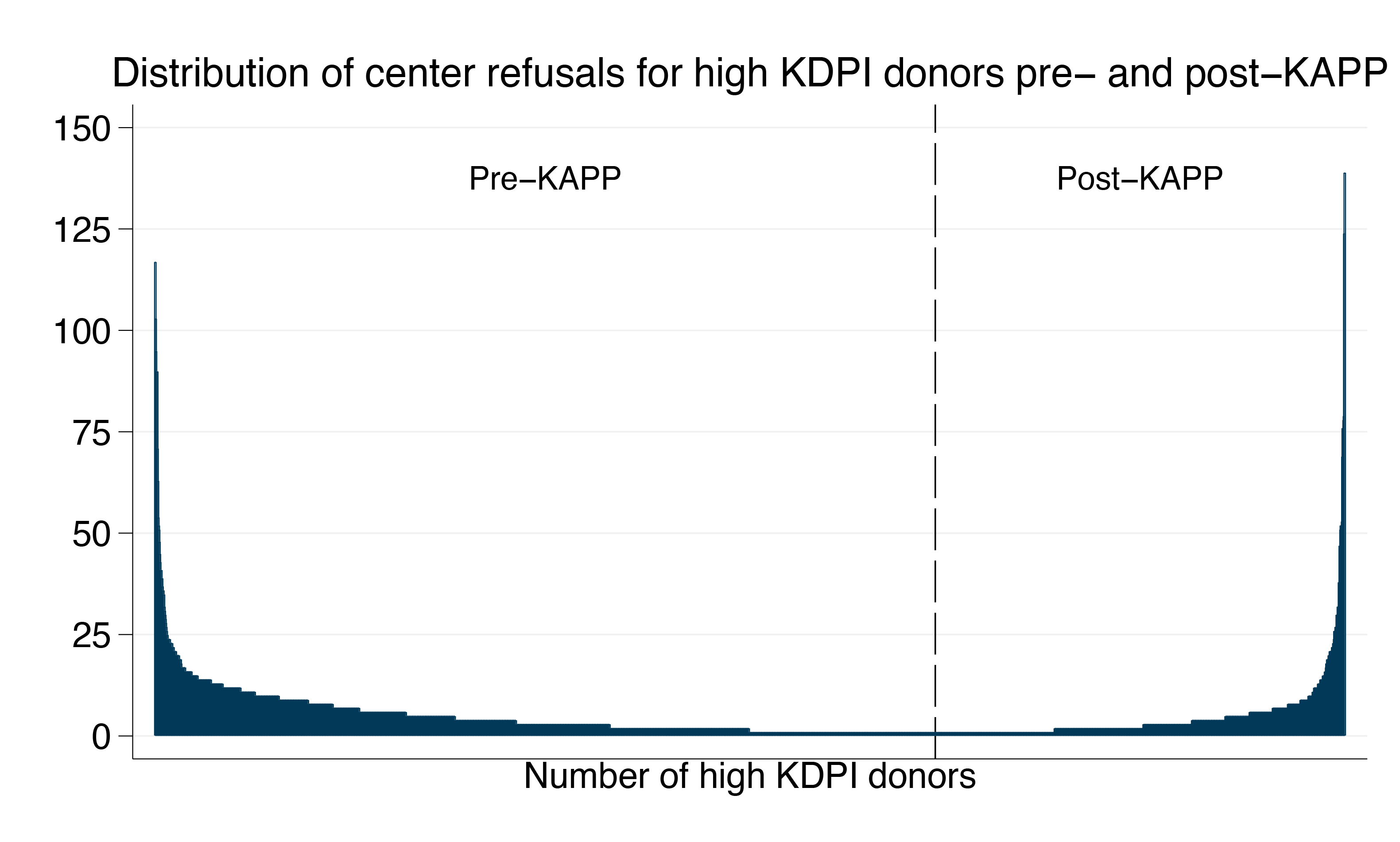Characterizing the Early Impact of the Kidney Accelerated Placement Project on Hard-to-place Kidneys
Johns Hopkins University, Baltimore, MD
Meeting: 2021 American Transplant Congress
Abstract number: 399
Keywords: Allocation, Donors, marginal, Kidney transplantation, Public policy
Topic: Clinical Science » Kidney » Kidney Deceased Donor Allocation
Session Information
Session Name: Kidney Deceased Donor Allocation 1
Session Type: Poster Video Chat
Date: Saturday, June 5, 2021
Session Time: 7:30pm-8:30pm
 Presentation Time: 7:40pm-7:50pm
Presentation Time: 7:40pm-7:50pm
Location: Virtual
*Purpose: In 2019, the OPTN implemented the Kidney Accelerated Placement Project (KAPP) in an effort to increase the utilization of kidneys with a high Kidney Donor Profile Index (KDPI, 80-100%). This one-year pilot program accelerated the national-level offers for these hard-to-place kidneys first to programs with historic likelihood of acceptance. We sought to characterize KAPP’s early impact on center-level acceptance practices, cold-ischemia time (CIT), and discard rate of high KDPI kidneys.
*Methods: We conducted a quasi-experimental, difference-in-differences (DID) analysis using SRTR data from 07/18/2018-07/17/2019 (pre-KAPP) and 07/18/2019-01/06/2020 (post-KAPP). We used negative binomial regression to quantify the change in center refusals for high KDPI donors across eras. We then explored changes in CIT using log-linear and hierarchical logistic regression, accounting for center- and OPO-level variation, respectively.
*Results: We identified 211 centers who were offered kidneys from 4499 high KDPI donors, of whom 1601 donors were offered post-KAPP. The median number of center refusals for high KDPI donors decreased from 2 (IQR: 0,5) pre-KAPP to 1 (IQR: 0,4) post-KAPP (p<0.001) (Figure). The proportion of donors with ≥10 center refusals decreased from 11% pre-KAPP to 6% post-KAPP (p<0.001). This translated into 14% fewer (IRR: 0.790.860.94, p=0.002) center refusals for high KDPI kidneys post-KAPP compared to pre-KAPP, and 16% fewer (DID IRR: 0.740.840.95, p=0.004) overall refusals between eras. However, there was no evidence of change in the discard rate across eras (DID OR: 0.760.881.02, p=0.1). Conversely, CIT for high KDPI kidneys decreased by 4% (RR: 0.730.960.99, p=0.1) post-KAPP compared to pre-KAPP, and 4% overall (DID RR: 0.920.961.00, p=0.03) between eras.
*Conclusions: Following the implementation of KAPP, there were fewer offers of high KDPI kidneys to centers that did not want them, reducing administrative burden for centers and OPOs. However, CIT decreased slightly, and there was no change in the discard rate.
To cite this abstract in AMA style:
Motter JD, Kernodle A, Levan M, Segev D, Garonzik-Wang J, Massie A. Characterizing the Early Impact of the Kidney Accelerated Placement Project on Hard-to-place Kidneys [abstract]. Am J Transplant. 2021; 21 (suppl 3). https://atcmeetingabstracts.com/abstract/characterizing-the-early-impact-of-the-kidney-accelerated-placement-project-on-hard-to-place-kidneys/. Accessed December 17, 2025.« Back to 2021 American Transplant Congress

